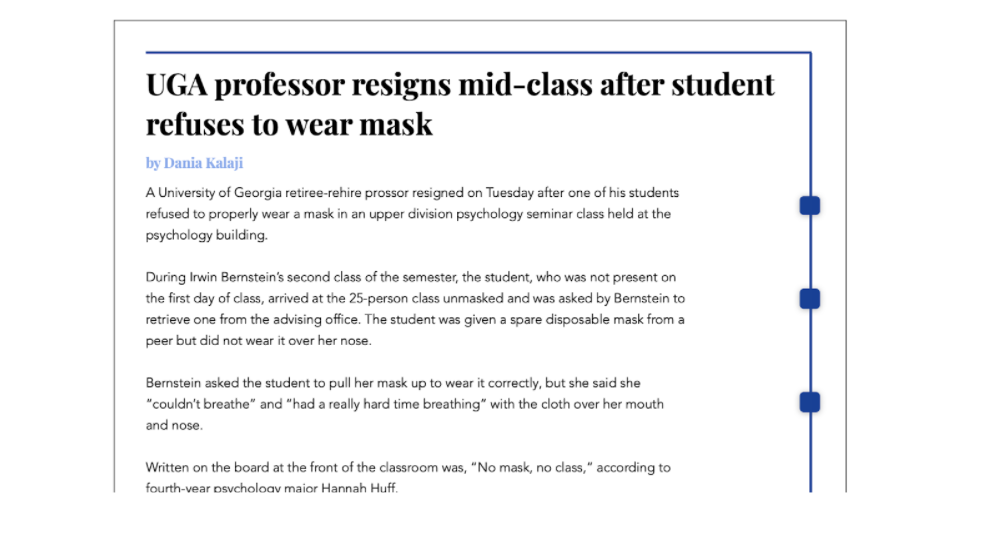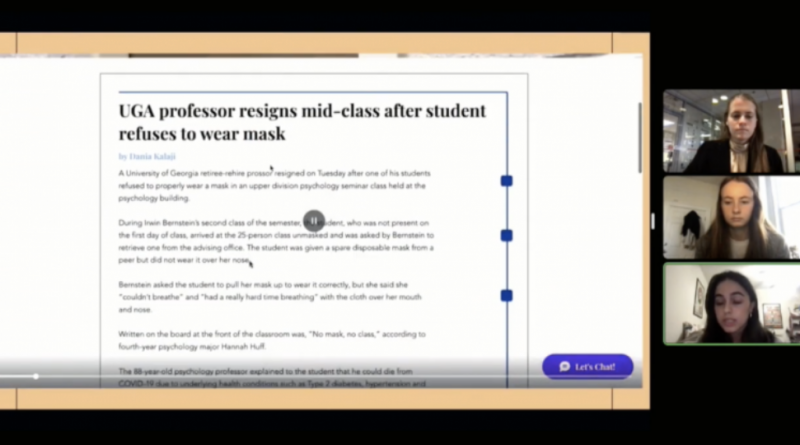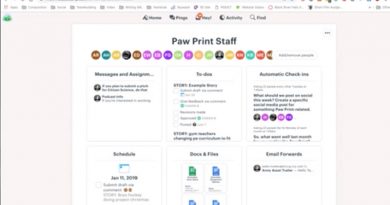Don’t stick to the status quo: 3 questions to ask yourself when developing digital innovations

Cassidy Hettesheimer is a sophomore at the University of Georgia majoring in Journalism with a minor in General Business and certificates in Sports Media and New Media. She was a part of the 2021-2022 UGA Innovation Lab team that participated in the Reynolds Journalism Institute Student Innovation Competition.
My journalism-producing habits fall into a routine: write this kind of story every two weeks for this website, push these buttons every week to get the broadcast up and running, take photos of the basketball game from these certain angles. But during the last six months, I’ve stepped outside routine to think of ways to innovate.
With the University of Georgia’s Journalism Innovation Lab, Sophia Haynes, Gabrielle Vitali and I participated in the Reynolds Journalism Institute Student Innovation Competition. We were tasked with developing an innovative solution to tackle distrust in journalism — a big task for a daunting problem.
We developed j-notes, a video-based annotation system journalists can use to explain reporting and writing decisions in a personal, connection-building way. We placed in the top six out of 50 teams who entered, but I know that the challenge of innovating on digital platforms won’t stop here.

I created a list of questions you should ask yourself and your team when looking to break the status quo with your publication, whether you’re participating in an innovation competition or looking to expand your outlet to new audiences.
1. What do we have experience in and knowledge of?
For j-notes, we thought about what we, as college students, are “experts” in. We all had created content for online news publications and, as college students, are constantly exposed to short-form video with Instagram stories and TikToks. Our school’s independent student newspaper, The Red & Black, had success using Instagram stories to provide behind-the-scenes glimpses into the journalism process.
We thought about what we knew, what we were exposed to, and how we could combine these things in new, innovative ways. We also looked at ideas with similar mechanics to j-notes, though different intents or applications, like
When looking for how to innovate online, think about your team’s strengths, your backgrounds, and what types of media you consume. Sometimes, when inventing something new, there’s no need to reinvent the wheel; reworking tried-and-true methods into new, engaging innovations can be a great fit
2. What do we not currently do that our audience might want to see?
To tackle the issue of distrust in journalism, we did preliminary research. Studies and articles reported that audiences often didn’t understand the decision-making behind journalists’ reporting and values.
We then looked at The Red & Black, the newsroom we chose to use for the competition. We thought about where people might have questions about an article and chose to include j-note annotations there (denoted by the dots that can be hovered over to activate the videos).
Think about what your audience might be looking for, or even poll them. Do they want to see more videos, photos or graphics? Are there questions that aren’t being answered or stories that aren’t being told? Try to identify and fill gaps.

3. How do we measure our innovation’s effectiveness once we implement it?
If you’re looking to solve a problem with a digital innovation, you need a way to measure the success of the innovation’s intended impact.
In the case of j-notes, we conducted informational interviews with audience members to gather opinions on the effectiveness of j-notes and feedback on their formatting; using empathy mapping, we assessed their reactions as they scrolled through the article with j-notes. We also developed a scale-based survey to look at whether j-notes increased trust in journalists.
How will you look at your innovation’s effectiveness, depending on its goal? Can you measure it using quantitative stats, looking at your publication’s page views, interactions or ad revenue? Can you measure it by gathering qualitative feedback from audience members, journalists or whoever you intend to be impacted by the innovation?
If you find yourself stuck trying to think outside the box with your digital platform, try to think back to these three questions. These three discussion points were helpful when we were brainstorming for the RJI Competition, and we hope that they might spark some innovation in other newsrooms, too.



